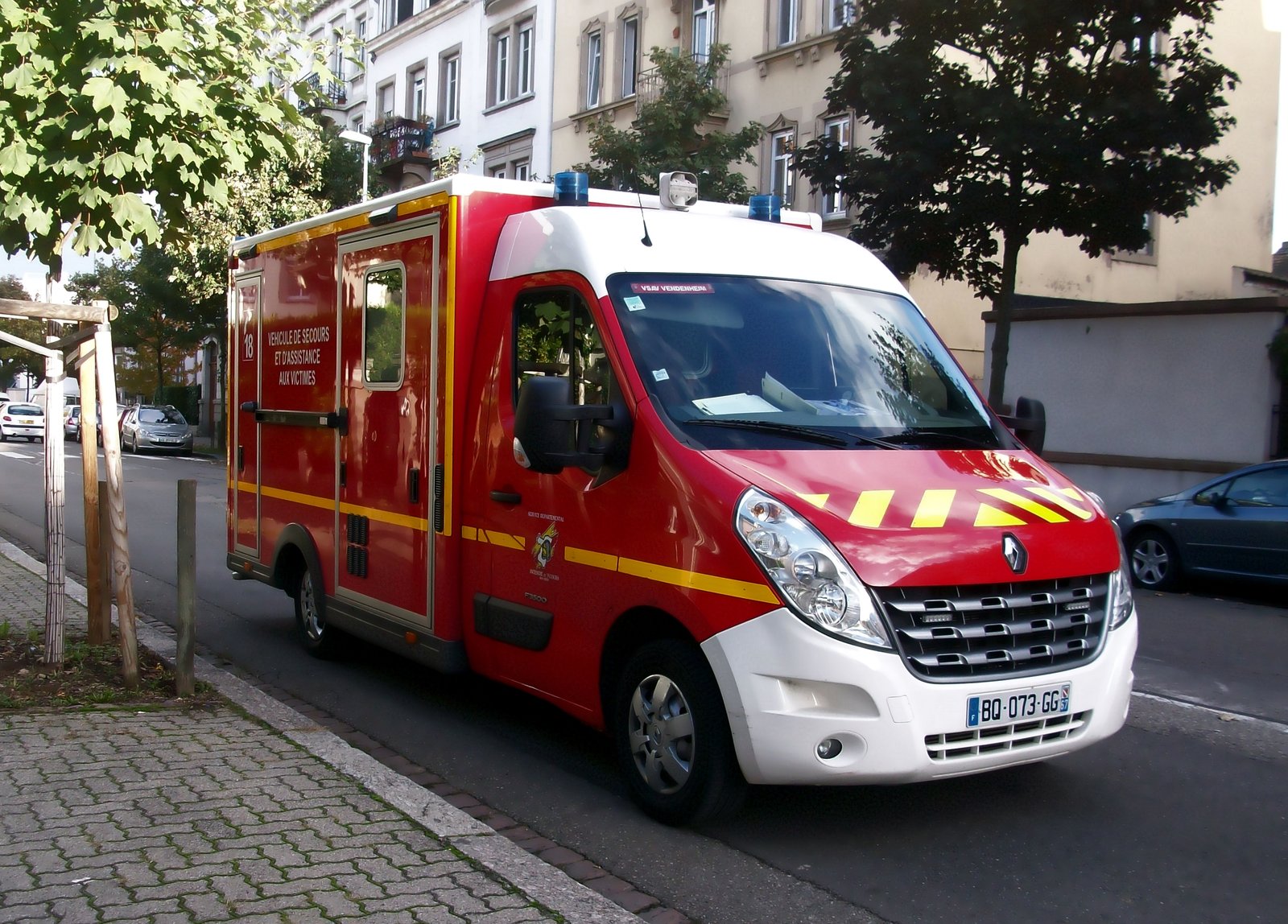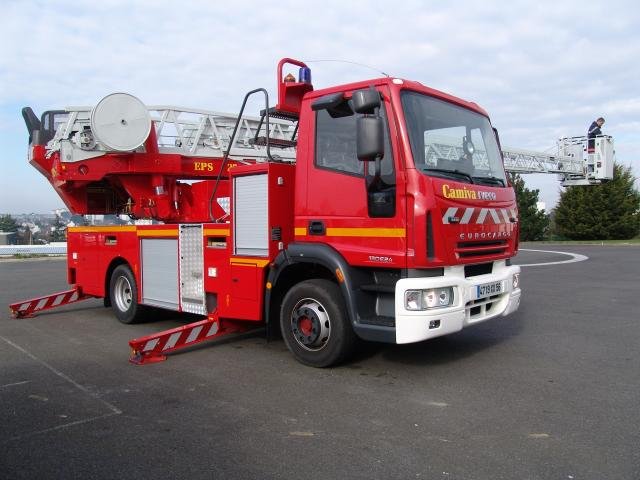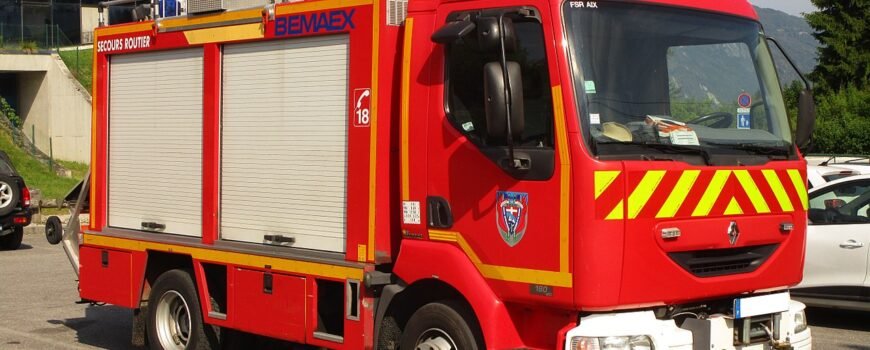To be able to accomplish all of these missions, different equipment is essential and requires, in most cases, the use of a very specific vehicle in order to intervene in the best conditions.
This is why we are going to present the land vehicles the most common in order to know a little more about the daily life of firefighters.
The VSR: Road Emergency Vehicle

the VSR intervenes on traffic accidents. Its purpose is to secure the scene of the incident, to protect against fires and to extricate the victims. It is equipped with three seats.
This vehicle has many equipments which fulfill different functions:
– The markup and l’lighting using a traffic cone, gyromat, light panels and spotlights;
– The fire protection thanks to lances and fire extinguishers;
– The chocking and lifting of vehicles in particular with the air cushions, the wedges, the hydraulic cylinder, les bastaings, crics, etc. ;
– The extrication with spreaders and shears.
The VSR is equipped with a Generator which delivers the hydraulic power required by the cutting tools.
Certain road emergency vehicles, VSR rail/route, are suitable for intervene on the tracks, especially in tunnels, where working conditions are more difficult.
Traffic accidents concern 6% of interventions.
The VSAV: Emergency and Victim Assistance Vehicle

The VSAV intervenes in order to carry emergency assistance to people. It has three seats and an additional one at the back for a doctor from the SAMU or the health service, in addition to the victim lying on the stretcher. It allows to transporter victims to the hospital while allowing the delivery of first aid during the journey. In addition, it is equipped with storage allowing the storage of:
– immobilization equipment
– lifting equipment
– medical kits: infusion, ACR (cardio respiratory arrest), childbirth, etc.
83.5% interventions of firefighters relate to emergency aid to people, i.e. 4.1 million of the 4.9 million interventions carried out in 2019.
The FPT: Pump-Ton Van

the FPT intervenes on urban fires and maybe uused by 8 firefighters. The rear part gives access to the pump, to the LDT (lance of the rotating reel) and to the 1/2 supply connections (lower part) and discharge (upper part) with red 1/4 turn valves (it happens more rarely that the 1/4 turn valve handles are blue for water and yellow for wetting / foaming). The tank can hold up to 6000 liters of water. The water supply is made by hydrant, by a water-carrying device or by pumping in a source such as a lake, river or pond.
The rear part of the truck consists of a cabin where the firefighters can quickly equip themselves with self-contained breathing apparatus during the trip.
Two mobile reel dispensers, which allow the hoses to be unrolled from the fire hoses are suspended at the rear of the FPT.
The vehicle is also equipped with equipment in its side boxes: lances, pipes, fittings, divisions, foam concentrates…
EPA: Automatic Pivoting Ladder

EPA intervenes on large fires height thanks to its retractable ladder 18, 24, 30 or 32 meters long equipped with a carrycot or basket (not systematic) or a interphone allowing communication with the team members on the ground. The EPA stabilizes itself on the ground using its 4 stabilizing jacks allowing the support polygon to be widened, while lifting vehicle wheels, which makes it possible to use the scale.
It is used in a lot of missions like fire attacks, rescues of people trapped at height, or for the transport of equipment or personnel.
The scale can swing, which allows it to reach different areas without moving the vehicle.
The CCF: Forest fire tanker

the CCF is used for forest fire extinguishing missions. It contains between 2000 and 13000 liters of water. It is provided with a 4×4 chassis to allow it to move easily in the forests, but it has a large size which can be problematic in certain situations. It can refuel by pumping any water point and it is used by 4 firefighters, mainly two team members, a driver and an apparatus manager. It all depends on the SDIS and their intervention doctrines. For example, in Gironde, a forest fire unit corresponds to three trucks: a VLHR (Light Off-Road Vehicle), an approved chief and two CCFs armed by a driver and a team member in each machine.

